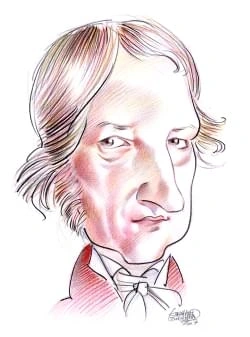123 résultats pour "abundance"
-
Dinosaurio - ciencias de la naturaleza.
© Microsoft Corporation. Reservados todos los derechos. Los antepasados de los dinosaurios fueron un grupo de arcosaurios primitivos llamados tecodontos que aparecieron a principios del periodo triásico. Algunos arcosaurios seconvirtieron en verdaderos cocodrilos y otros en pterosaurios, reptiles voladores con alas compuestas de membranas finas de piel apoyadas sobre un solo dedo en forma depalo. También otros arcosaurios adoptaron la postura bípeda (sostenidos sobre dos patas) y ciertas especie...
-
Invertebrate - biology.
animals with a five-pointed design. They live in the sea and move with the help of tiny fluid-filled feet—another feature found nowhere else in the animal world. Zoologists recognize several different groups of worms. The phylum known as flatworms contains the simplest animals possessing heads. Nerves and sense organs areconcentrated in the head. Most flatworms are paper-thin and live in a variety of wet or damp habitats, including the digestive systems of other animals. Roundwormsrepresent anot...
-
Invertebrate - biology.
animals with a five-pointed design. They live in the sea and move with the help of tiny fluid-filled feet—another feature found nowhere else in the animal world. Zoologists recognize several different groups of worms. The phylum known as flatworms contains the simplest animals possessing heads. Nerves and sense organs areconcentrated in the head. Most flatworms are paper-thin and live in a variety of wet or damp habitats, including the digestive systems of other animals. Roundwormsrepresent anot...
-
Technology.
loose soil in this region, known as the Fertile Crescent, was easily scratched for planting, and an abundance of trees was available for firewood. By 5000 BC, farming communities were established in areas known today as Syria, Turkey, Lebanon, Israel, Jordan, Greece, and the islands of Crete and Cyprus. Agricultural societies in these places constructed stone buildings, used the sickle to harvest grain, developed a primitive plowstick, and advanced their skills inmetalworking. Trade in flint al...
-
North Dakota - geography.
Bismarck, the growing season averages 134 days, as the average date of the last killing frost is May 11 and that of the first killing frost is September 22. The length ofthe growing season drops to about 110 days in the northerly reaches of the state. The long periods of summer sunshine at this latitude, providing as much as 16 hoursof daylight in summer, help crops to mature quickly, thus compensating somewhat for the relatively short growing season. Temperatures in the north are, on the averag...
-
North Dakota - USA History.
Bismarck, the growing season averages 134 days, as the average date of the last killing frost is May 11 and that of the first killing frost is September 22. The length ofthe growing season drops to about 110 days in the northerly reaches of the state. The long periods of summer sunshine at this latitude, providing as much as 16 hoursof daylight in summer, help crops to mature quickly, thus compensating somewhat for the relatively short growing season. Temperatures in the north are, on the averag...
-
Spain - country.
B Natural Resources Spain has a number of mineral resources. The largest known deposits are of iron ore, zinc, and lead. Spain also produces significant quantities of copper and mercury.These deposits are mined mainly in Huelva province in southwestern Spain, around Cartagena on the Mediterranean, and at various points along the Bay of Biscay inthe north. Additionally, uranium is mined in the region of Extremadura, near the Portuguese frontier, where pyrites, fluorspar, gypsum, tungsten, and po...
-
Georgia (country) - country.
1917. During the subsequent Soviet period, religious practice was strongly discouraged because the Soviet state was officially atheistic; however, the GeorgianOrthodox Church was allowed to function openly. Orthodox Christianity is the religion of about 58 percent of the Georgian population. Muslims represent about 19 percent of the country’s population, with ethnicAzerbaijanis, Kurds, and Ajars comprising the principal Muslim groups. Ajars are ethnic Georgians who converted to Islam in the 17th...
-
-
Global Warming.
some of the warming influence of increasing greenhouse gases. A1 Carbon Dioxide Carbon dioxide is the second most abundant greenhouse gas, after water vapor. Carbon dioxide constantly circulates in the environment through a variety of naturalprocesses known as the carbon cycle. It is released into the atmosphere from natural processes such as eruptions of volcanoes; the respiration of animals, whichbreathe in oxygen and exhale carbon dioxide; and the burning or decay of plants and other organic...
-
Animal - biology.
Vertebrates are customarily divided into cold-blooded and warm-blooded animals, but these labels are not very precise. Biologists normally use the terms ectoderm and endoderm to describe temperature regulation more accurately. An ectoderm is an animal whose temperature is dictated by its surroundings, while an endoderm is one that keeps its body at a constant warm temperature by generating internal heat. Reptiles, amphibians, and fish are ectoderms. Although they do not maintain a constant wa...
-
Wisconsin (state) - geography.
-6° C (22° F) in the southeast, along the Lake Michigan shore. During winter extremely cold weather persists for several weeks at a time. C2 Precipitation Average annual precipitation ranges from 700 to 800 mm (28 to 32 in). Rainfall is generally heaviest during the spring and summer, and snowfall is generally moderatein the south, but can be quite heavy in the north. Thunderstorms, sometimes accompanied by devastating tornadoes, are common in spring and summer, particularly inthe southern part...
-
Wisconsin (state) - USA History.
-6° C (22° F) in the southeast, along the Lake Michigan shore. During winter extremely cold weather persists for several weeks at a time. C2 Precipitation Average annual precipitation ranges from 700 to 800 mm (28 to 32 in). Rainfall is generally heaviest during the spring and summer, and snowfall is generally moderatein the south, but can be quite heavy in the north. Thunderstorms, sometimes accompanied by devastating tornadoes, are common in spring and summer, particularly inthe southern part...
-
South Carolina - geography.
(20° F) or lower, occur each winter. July temperatures average 27° C (80° F) in most of the state, with temperatures in the lower 20°s C (lower 70°s F) in themountains. Except in the mountains, summer daytime highs throughout South Carolina often enter the lower 30°s C (lower 90°s F). The temperature in July in Columbiaranges from 21° to 33° C (70° to 92° F). D2 Precipitation Central South Carolina has an average annual precipitation (both rainfall and snowfall) of 1,140 mm (45 in). Greater amo...
-
South Carolina - USA History.
(20° F) or lower, occur each winter. July temperatures average 27° C (80° F) in most of the state, with temperatures in the lower 20°s C (lower 70°s F) in themountains. Except in the mountains, summer daytime highs throughout South Carolina often enter the lower 30°s C (lower 90°s F). The temperature in July in Columbiaranges from 21° to 33° C (70° to 92° F). D2 Precipitation Central South Carolina has an average annual precipitation (both rainfall and snowfall) of 1,140 mm (45 in). Greater amo...
-
Nevada - geography.
The Truckee, Carson, and Walker rivers flow out of the Sierra Nevada, thread their way around several of the desert ranges, and also end in closed basins. The Walkerflows into Walker Lake, the Carson into Lahontan Reservoir. The major part of the Truckee’s flow is now diverted to Lahontan Reservoir, although as required by lawsome of it empties into Pyramid Lake. Because these three streams flow constantly, the lakes into which they empty never dry up. Winnemucca Lake formerly receivedoverflow w...
-
Nevada - USA History.
The Truckee, Carson, and Walker rivers flow out of the Sierra Nevada, thread their way around several of the desert ranges, and also end in closed basins. The Walkerflows into Walker Lake, the Carson into Lahontan Reservoir. The major part of the Truckee’s flow is now diverted to Lahontan Reservoir, although as required by lawsome of it empties into Pyramid Lake. Because these three streams flow constantly, the lakes into which they empty never dry up. Winnemucca Lake formerly receivedoverflow w...
-
-
Turkey - country.
has a general elevation of 900 to 1,500 m (3,000 to 5,000 ft) above sea level. The eastern highlands region is the most mountainous and rugged portion of Turkey; Mount Ararat (Ağrı Da ğı) is the highest peak in the country at 5,165 m (16,945ft). Many Christians and Jews believe it to be the same Mount Ararat mentioned in the Bible as the place where Noah’s ark came to rest. The eastern highlands are thesource for both the Tigris (Dicle) and Euphrates (Fir āt)—two of southwestern Asia’s principal...
-
Republic of Indonesia - country.
Mahakam in East Kalimantan and the Martapura and Barito in South Kalimantan. Most of these rivers originate in the island’s central massif (mountain mass) and meander through extensive swamps as they approach the coast. Settlements such as Samarinda and Banjarmasin cluster along the rivers, which serve ascommunication routes into the interior. The largest rivers on Sumatra drain from west to east into the Strait of Malacca. In the north, the Asahan River once linked trade between the Batak peo...
-
Brazil - country.
occasional droughts. Brazil contains a wealth of mineral and plant resources that have not yet been fully explored. It possesses some of the world’s largest deposits of iron ore and containsrich deposits of many other minerals, including gold and copper. Brazil’s fossil fuel resources are modest, but this limitation is offset by the considerable hydroelectricpotential of the nation’s many rivers. Although Brazil is an important producer of tropical crops, areas of highly fertile land are limited...
-
Communism.
In Britain, Robert Owen, a philanthropic Welsh manufacturer, strove against the social problems brought about by the Industrial Revolution and sought to improve thewelfare of workers. As manager of a cotton mill, he enhanced the environment of his workers by improving their housing, modernizing mill equipment for greater safetyand sanitation, and establishing low-priced stores for the workers and schools for their children. Owen believed that workers, rather than governments, should createthe in...
-
Communism .
In Britain, Robert Owen, a philanthropic Welsh manufacturer, strove against the social problems brought about by the Industrial Revolution and sought to improve thewelfare of workers. As manager of a cotton mill, he enhanced the environment of his workers by improving their housing, modernizing mill equipment for greater safetyand sanitation, and establishing low-priced stores for the workers and schools for their children. Owen believed that workers, rather than governments, should createthe in...
-
Federal Republic of Germany - country.
B Rivers and Lakes Rivers have played a major role in Germany’s economic development. The Rhine River flows in a northwesterly direction from Switzerland through much of westernGermany and The Netherlands into the North Sea. It is a major European waterway and a pillar of commerce and trade. Its primary German tributaries include theMain, Mosel, Neckar, and Ruhr rivers. The Oder (Odra) River, along the border between Poland and Germany, runs northward and empties into the Baltic; it provides an...
-
France - country.
In both the Paris and Aquitaine basins, fertile soils derived from limestone and wind-deposited dust, called loess, have supported prosperous agriculture since ancienttimes. Other lowlands in France are scattered and relatively small. They include the Alsace Plain in the east, bordering Germany, the valley of the Rhône River in thesoutheast, and the Languedoc Plain along the Mediterranean coast. A2 Uplands France contains several regions of uplands, the worn down remains of ancient mountain sys...
-
Gabón - geografía.
mineros, ha ido aumentando la presión para la explotación forestal.Hagos Legesse La riqueza minera de Gabón le ha proporcionado uno de los más altos niveles de vida de África y ha mantenido los bosques a salvo de la presión explotadora. Comoresultado, aproximadamente el 81,4% (2005) de la superficie de Gabón permanece cubierta por bosques, con una fauna abundante. Su población de elefantes se encuentraentre las mayores y más estables del mundo. Las áreas protegidas cubren el 14,4% (2007) del paí...
-
-
Océanos y oceanografía - geografía.
fundamentales para el clima y para la propia vida. El agua es una de las sustancias más comunes, pero tiene algunas propiedades físicas y químicas inusuales. Es uno de los pocos líquidos naturales y puede encontrarse enlas tres fases: vapor de agua, agua líquida y hielo sólido. Tiene un calor específico y un calor latente grandes, de modo que son necesarias grandes cantidades de energíapara elevar su temperatura, para fundir hielo o para evaporar agua. Estas características controlan en gran med...
-
Océanos y oceanografía - geografía.
El océano contiene el 97% del agua de la Tierra; en la atmósfera está el 0,001%. Los procesos que intercambian y transforman el agua en vapor, en líquido o en sólido sonfundamentales para el clima y para la propia vida. El agua es una de las sustancias más comunes, pero tiene algunas propiedades físicas y químicas inusuales. Es uno de los pocos líquidos naturales y puede encontrarse enlas tres fases: vapor de agua, agua líquida y hielo sólido. Tiene un calor específico y un calor latente grandes...
-
Océanos y oceanografía - ciencias de la naturaleza.
El océano contiene el 97% del agua de la Tierra; en la atmósfera está el 0,001%. Los procesos que intercambian y transforman el agua en vapor, en líquido o en sólido sonfundamentales para el clima y para la propia vida. El agua es una de las sustancias más comunes, pero tiene algunas propiedades físicas y químicas inusuales. Es uno de los pocos líquidos naturales y puede encontrarse enlas tres fases: vapor de agua, agua líquida y hielo sólido. Tiene un calor específico y un calor latente grandes...
-
Nutrición humana - ciencias de la naturaleza.
Las proteínas son nutrientes que no se almacenan en el organismo, por lo que es necesario incluirlas en la dieta diaria. La cantidad de proteínas que se debe ingerir cada díadepende de muchos factores, como la edad o el estado de salud. Por lo general, las necesidades proteicas de un adulto sano son aproximadamente 0,8-1 g/kg de peso ydía. Cuando se ingieren proteínas en exceso, lo cual es frecuente en países con dietas ricas en carne, las proteínas sobrantes se descomponen en compuestos product...
-
Protein.
Myosin, the protein chiefly responsible for muscle contraction, combines with actin, another muscle protein, forming actomyosin, the different filaments of whichshorten, causing the contracting action. VI GLOBULAR PROTEINS Unlike fibrous proteins, globular proteins are spherical and highly soluble. They play a dynamic role in body metabolism. Examples are albumin, globulin, casein,hemoglobin, all of the enzymes, and protein hormones. The albumins and globulins are classes of soluble proteins a...
-
Proteína - ciencias de la naturaleza.
Estructura secundaria, terciaria y cuaternaria de una proteínaLas interacciones entre las moléculas que forman una proteína, son la causa de que la cadena polipeptídica enrollada (izquierda) sepliegue para dar una estructura tridimensional (centro), que puede unirse a otras para formar grandes proteínas complejas (derecha).© Microsoft Corporation. Reservados todos los derechos. El nivel más básico de estructura proteica, llamado estructura primaria, es la secuencia lineal de aminoácidos que está...
-
Cambio climático - geografía.
relevante que influye en la dinámica del clima en la Tierra. El hielo presente en las regiones polares proporciona datos sobre la composición de la antigua atmósfera de la Tierra. Los núcleos de hielo analizados por los científicos,procedentes de las placas de hielo de Groenlandia y de la Antártida, ofrecen información sobre la temperatura y los gases de efecto invernadero presentes en la atmósferade hace cientos de miles de años. Las capas de estos núcleos de hielo formadas por las nevadas esta...
-
Cambio climático - ciencias de la naturaleza.
relevante que influye en la dinámica del clima en la Tierra. El hielo presente en las regiones polares proporciona datos sobre la composición de la antigua atmósfera de la Tierra. Los núcleos de hielo analizados por los científicos,procedentes de las placas de hielo de Groenlandia y de la Antártida, ofrecen información sobre la temperatura y los gases de efecto invernadero presentes en la atmósferade hace cientos de miles de años. Las capas de estos núcleos de hielo formadas por las nevadas esta...
-
-
Venezuela - geografía.
impulsar el turismo. 2.4 Flora y fauna Las diferencias paisajísticas, climáticas y topográficas de las regiones de Venezuela dan origen a una enorme variedad vegetal. En las selvas nubladas de las cordilleras de laCosta y de los Andes, así como en las serranías, destaca la presencia de cedro dulce, jarillo o apamate, que son árboles maderables, además de la presencia de variasespecies de palmas y orquídeas, como la catleya, flor nacional. En las pluvisilvas del sur de Venezuela se encuentran ár...
-
Wetland.
Other plants and animals have special adaptations suited for living in a wet environment. Most emergent plants have air spaces in their stems that enable oxygen to betransported to roots that grow in sediments with no oxygen. Some of the trees that grow in swamps form a set of roots above the soil surface or above the water thatallows them to get oxygen to the lower roots. In saltwater wetlands, specialized cells can limit the amount of salt that enters a plant, or specialized organs can excrete...
-
México (república) - geografía.
Las llanuras costeras son en su generalidad zonas bajas, llanas y compuestas por materiales arenosos, aunque en las costas del Pacífico ocasionalmente son interrumpidaspor pequeñas serranías. Baja California, península larga y estrecha que se extiende a lo largo de 1.200 km al sur del límite noroeste del país, está atravesada por la sierrade la Baja California, continuación de la cadena costera del Pacífico, en Estados Unidos, que constituye el sistema surcaliforniano. La península de Yucatán, q...
-
Belize - country.
Education is compulsory for children between the ages of 5 and 14. Attendance at primary schools was nearly universal in 2002–2003, but only 78 percent of children ofsecondary school age were enrolled in school. Higher education is available at colleges in Belize City and Corozal. The literacy rate of 93 percent is one of the highest inLatin America. C Government Belize is governed under a constitution that became effective at independence in 1981. Belize recognizes the British monarch as its o...
-
Zebra - biology.
C Life Span Captive zebras have lived into their late 30s. Life expectancy in the wild, where predators abound, is probably not much more than 12 years. IV SOCIAL BEHAVIOR Like horses, zebras have large brains and a wide variety of social behaviors. Although they cannot match the overall intelligence of mammals that hunt, zebras interactwith each other in complex ways. Zebras usually live in groups known as herds, but the social structure of these groups depends on the species. The plains zeb...
-
Seal (mammal) - biology.
remote lakes by swimming thousands of kilometers up rivers from the Arctic Ocean. A few other species such as ringed seals and harbor seals have been found livingyear-round in lakes and rivers near the coasts of Russia, Canada, and Alaska. IV DIET OF SEALS Most seals eat fish and sometimes squid. The leopard seal, an Antarctic species, may have the most diverse diet of all, commonly hunting penguins and other seabirds,smaller seals, as well as fish, squid, krill (small shrimplike crustaceans),...
-
Neandertals.
Neandertals made stone tools by striking flakes from rock “cores.” The cores were carefully selected and prepared so that only a single blow was normally required todetach a flake. A number of relatively standardized flakes were sometimes produced from a single core. These sharp flakes served as “blanks” that were further workedand shaped into the desired tools. Suitable stone was sometimes rare, and often tools were sharpened and resharpened to make new tools, yielding a whole variety ofshapes...
-
Capitalism.
Physiocracy is the term applied to a school of economic thought that suggested the existence of a natural order in economics, one that does not require direction from the state for people to be prosperous. The leader of the physiocrats, the economist François Quesnay, set forth the basic principles in his Tableau économique (1758), in which he traced the flow of money and goods through the economy. Simply put, this flow was seen to be both circular and self-sustaining. More important, however...
-
-
Océanos y oceanografía - ciencias de la naturaleza.
El océano contiene el 97% del agua de la Tierra; en la atmósfera está el 0,001%. Los procesos que intercambian y transforman el agua en vapor, en líquido o en sólido sonfundamentales para el clima y para la propia vida. El agua es una de las sustancias más comunes, pero tiene algunas propiedades físicas y químicas inusuales. Es uno de los pocos líquidos naturales y puede encontrarse enlas tres fases: vapor de agua, agua líquida y hielo sólido. Tiene un calor específico y un calor latente grandes...
-
Tiger - biology.
have a simple digestive system designed to process meat so that the nutrients can be readily absorbed into the bloodstream. With the exception of white tigers, which have blue eyes, all tigers have yellow eyes. Tigers mainly use vision to find prey. Although tigers see about as well as humansduring the day, their large eye openings gather more light than do human eyes, making tiger night vision far superior to that of humans. In addition, a special structurein the tiger’s eye, called the tapetu...
-
China - geografía.
permiten la ubicación de puertos naturales. Hacia el sur de las colinas de Nan Ling está la depresión del Xi Jiang, una zona montañosa de suelos poco fértiles; sin embargo,los numerosos arroyos de la región están bordeados por valles aluviales planos y fértiles. La amplia planicie deltaica del Zhu Jiang (río Perla) se conoce comúnmente comodelta de Cantón. 2.1. 6 La meseta Tibetana En el extremo suroeste de China está la alta meseta del Tíbet, enmarcada por montañas; es la meseta más elevada de...
-
Finland - country.
Productive forestland is the most valuable natural resource of Finland. Spruce, pine, and silver birch are the principal trees used to manufacture wood and pulp andpaper products. Finland lacks coal and petroleum resources and is a net importer of energy resources. However, Finland does have significant deposits of peat, which is cut from thenumerous peat bogs that cover much of the north. Peat is an important heat source for homes, and it provides about 7 percent of Finland’s electricity needs....
-
Industrial Revolution
I
INTRODUCTION
Industrial Revolution, widespread replacement of manual labor by machines that began in Britain in the 18th century and is still continuing in some parts of the world.
The most important advance in iron production occurred in 1784 when Englishman Henry Cort invented new techniques for rolling raw iron, a finishing process thatshapes iron into the desired size and form. These advances in metalworking were an important part of industrialization. They enabled iron, which was relativelyinexpensive and abundant, to be used in many new ways, such as building heavy machinery. Iron was well suited for heavy machinery because of its strength anddurability. Because of t...
-
Industrial Revolution .
The most important advance in iron production occurred in 1784 when Englishman Henry Cort invented new techniques for rolling raw iron, a finishing process thatshapes iron into the desired size and form. These advances in metalworking were an important part of industrialization. They enabled iron, which was relativelyinexpensive and abundant, to be used in many new ways, such as building heavy machinery. Iron was well suited for heavy machinery because of its strength anddurability. Because of t...
-
Geology.
terminology. Today the geologic time scale is generally agreed upon and used by scientists around the world, dividing time into eons, eras, periods, and epochs. Everyfew years, the numerical time scale is refined based on new evidence, and geologists publish an update. Geologists use several methods to determine geologic time. These methods include physical stratigraphy, or the placement of events in the order of their occurrence,and biostratigraphy, which uses fossils to determine geologic time...
-
Delaware - geography.
D Climate Delaware has generally hot and humid summers and mild winters. D1 Temperature In July, average daytime temperatures are usually in the upper 20°s to lower 30°sC (80°sF) or even higher. But because summer nights tend to be cooler than thedays, July averages are about 24°C (about 75°F). In addition, onshore sea breezes can reduce daytime temperatures along the coast by 3 to 6 Celsius degrees (5 to 10Fahrenheit degrees). January averages range from -1°C (31°F) at Newark, in the north, t...
-
-
Delaware - USA History.
D Climate Delaware has generally hot and humid summers and mild winters. D1 Temperature In July, average daytime temperatures are usually in the upper 20°s to lower 30°sC (80°sF) or even higher. But because summer nights tend to be cooler than thedays, July averages are about 24°C (about 75°F). In addition, onshore sea breezes can reduce daytime temperatures along the coast by 3 to 6 Celsius degrees (5 to 10Fahrenheit degrees). January averages range from -1°C (31°F) at Newark, in the north, t...
-
Saskatchewan (province) - Geography.
The length of the frost-free season varies within the province. In the southwest, particularly in the valley lands along the South Saskatchewan River, the frost-freeperiod ranges from 150 to 160 days. Regina enjoys about 123 frost-free days, and Saskatoon has about 111. The far north has only from 85 to 95 frost-free days. One important characteristic of Saskatchewan’s climate is the great variability in temperature and precipitation from year to year, which is often critical for agriculture.The...
}})








